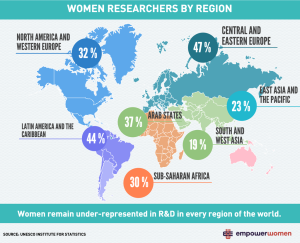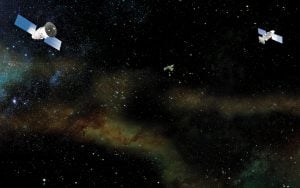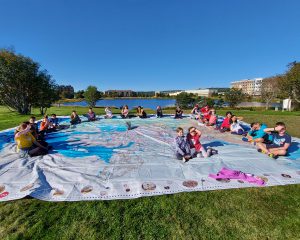
Science & Tech
UN declares International Day of Women in Science
From Roberta Bondar to Harriet Brooks, Canada has more than its fair share of women scientists to be proud of. However women are still a minority in the STEM fields
- 472 words
- 2 minutes
Science & Tech

In psychedelic flashes of colour, LiDAR imagery is certainly eye-catching. But LiDAR sensing can also “see” what the eye does not: a glacier scarred valley bottom, ruins long obscured by rainforest, a snowy day on Mars.
LiDAR stands for light detection and ranging. It’s the younger, cooler cousin of radar technology that, instead of using radio waves to detect objects, uses pulses of laser light. Those light pulses allow us to see landscapes in much greater detail.
Lasers are fired in any given direction and bounce off the objects in their path. A device on the sensor measures how long the light takes to travel to the object and be reflected back. If we know how long this takes, we can calculate how far away the object is because we already know what the speed of light is (299,792,458 metres per second) and that distance equals speed multiplied by time. Once we know the distance in relation to where the sensor is, multiple data points start to build a three-dimensional picture of what a landscape looks like.
This infographic shows the topography of the Athabasca River Valley north of Jasper, Alta., with the slope of Hawk Mountain on the right, where Highway 16 sweeps round to the northeast past Snaring. It also briefly summarizes how the technology works. The LiDAR imagery shows the minute details of the intricate river systems etched into the valley — details that are hidden by vegetation and invisible to the naked eye.
LiDAR imagery first came onto the public’s radar in the early ’70s, when the Apollo 15 mission used laser technology to map the surface of the moon. Since then, the technology has been developed and refined to encompass a multitude of uses. LiDAR has driven huge leaps in fields such as archeology — last year, archeologists found an entire 3,000-year-old Mayan ceremonial complex in Mexico. And ecologists in Canada are using the technology to explore how the boreal forest structure changes over time. LiDAR also acts as the eyes of self-driving cars. It’s even in the newer Apple products, such as the iPhone 12 Pro and the iPad Pro 2020, allowing users to explore augmented reality in greater detail, as well as improving the camera’s focus in low-light conditions. And two archeologists from Colorado State University are on a mission to map the entire surface of the Earth using LiDAR to create a record — The Earth Archive — of our planet for future generations.
As LiDAR technology further advances, the potential ways it can help us to better understand the world we live in — to see what we cannot see — are infinite.
Are you passionate about Canadian geography?
You can support Canadian Geographic in 3 ways:

This story is from the March/April 2021 Issue

Science & Tech
From Roberta Bondar to Harriet Brooks, Canada has more than its fair share of women scientists to be proud of. However women are still a minority in the STEM fields

Science & Tech
As geotracking technology on our smartphones becomes ever more sophisticated, we’re just beginning to grasps its capabilities (and possible pitfalls)

Science & Tech
Across Canada, teachers are getting creative with their methods and approaches in the classroom to overcome challenges imposed by COVID-19

Environment
Carbon capture is big business, but its challenges fly in the face of the need to lower emissions. Can we square the circle on this technological Wild West?